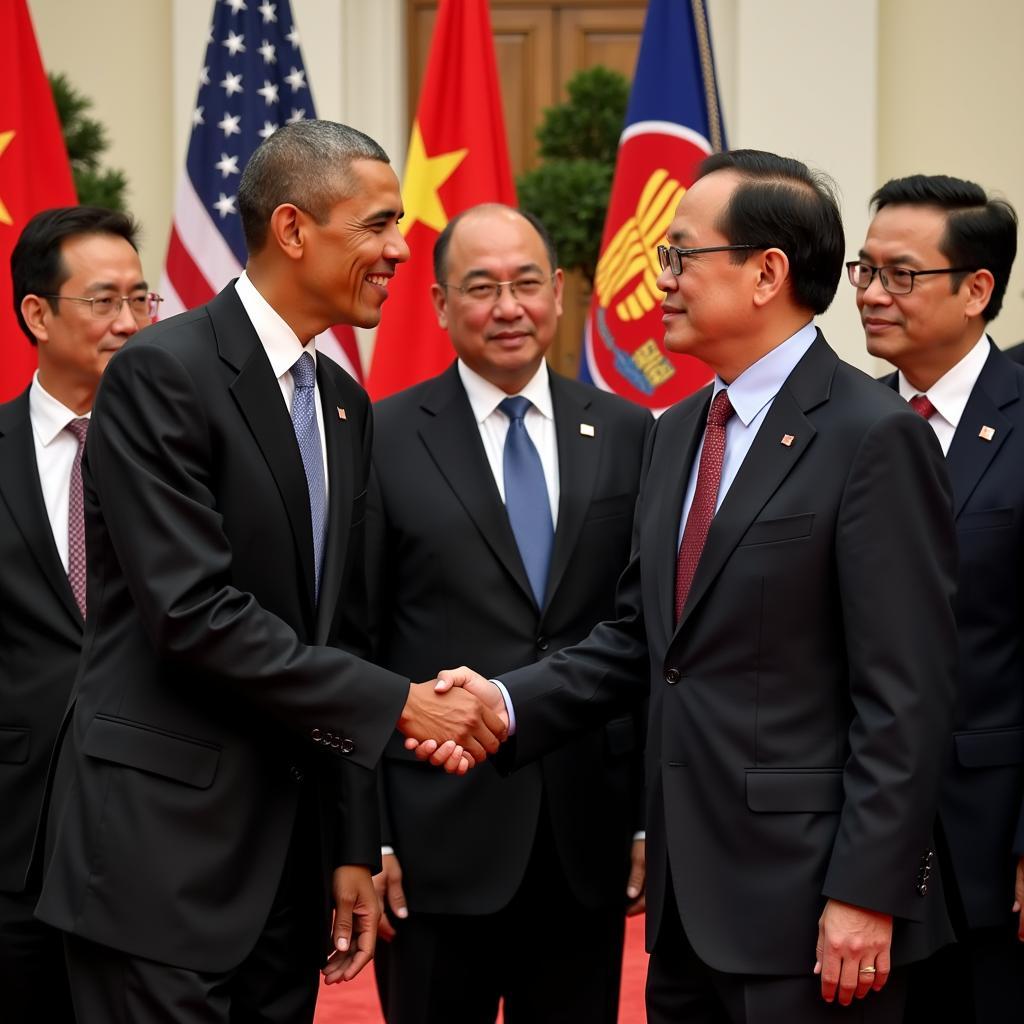The relationship between Asean And Obama marked a pivotal era in US-Asia relations. Obama’s strategic “pivot” or “rebalance” to Asia, initiated in 2011, placed ASEAN at the center of US foreign policy, signifying a renewed focus on Southeast Asia’s growing economic and strategic importance.
Obama’s Vision for ASEAN: Strengthening Partnerships
Obama’s engagement with ASEAN was multifaceted, encompassing economic, security, and socio-cultural dimensions. He recognized the potential of ASEAN as a key driver of regional stability and prosperity. His administration actively participated in ASEAN-led forums, including the East Asia Summit and the ASEAN Regional Forum, solidifying US commitment to multilateralism in the region.
- Elevated US-ASEAN relations to a strategic partnership
- Increased economic engagement through initiatives like the US-ASEAN Expanded Economic Engagement
- Enhanced security cooperation through joint military exercises and capacity building programs
- Promoted people-to-people exchanges through educational and cultural initiatives
 Obama at an ASEAN Summit
Obama at an ASEAN Summit
The Pivot to Asia: Deepening US-ASEAN Ties
The “pivot” to Asia was a cornerstone of Obama’s foreign policy. It signaled a shift in US strategic focus from the Middle East to the Asia-Pacific region, recognizing the rise of Asia as a global economic and political powerhouse. ASEAN, with its strategic location and rapidly growing economies, became a crucial partner in this rebalancing effort.
- Reinforced US commitment to the region’s security architecture
- Counterbalanced China’s growing influence in the South China Sea
- Promoted economic integration through the Trans-Pacific Partnership (TPP)
- Fostered closer ties with individual ASEAN member states
Challenges and Opportunities: Navigating a Complex Landscape
Despite the positive strides made during Obama’s presidency, the US-ASEAN relationship faced challenges. The South China Sea disputes, human rights concerns in some ASEAN member states, and the eventual withdrawal of the US from the TPP under the Trump administration created complexities. However, the foundation laid during Obama’s tenure continues to shape the US-ASEAN dynamic.
- Addressing the South China Sea disputes through diplomacy and international law
- Promoting human rights and democratic values in the region
- Navigating the changing geopolitical landscape in the Asia-Pacific
- Seeking new avenues for economic cooperation
Conclusion: A Lasting Impact on US-ASEAN Relations
Obama’s engagement with ASEAN left a lasting impact on US-Asia relations. His focus on strengthening partnerships, promoting regional stability, and fostering economic cooperation solidified ASEAN’s central role in US foreign policy. While challenges remain, the legacy of Obama’s “pivot” continues to shape the US-ASEAN relationship in the 21st century. ASEAN and Obama’s collaborative efforts laid the groundwork for continued cooperation and engagement in the years to come.
FAQ
- What was Obama’s “pivot” to Asia?
- How did Obama strengthen US-ASEAN relations?
- What were the key challenges in the US-ASEAN relationship during Obama’s presidency?
- What is the legacy of Obama’s engagement with ASEAN?
- How did the South China Sea disputes impact US-ASEAN relations?
- What was the role of the Trans-Pacific Partnership (TPP) in US-ASEAN economic cooperation?
- How did Obama’s policies affect people-to-people exchanges between the US and ASEAN countries?
Common Scenarios
- Researchers seeking information about Obama’s foreign policy in Southeast Asia.
- Students studying US-ASEAN relations.
- Policy analysts evaluating the impact of the “pivot” to Asia.
- Business professionals interested in US-ASEAN economic cooperation.
Further Reading
- Explore other articles on our website related to US foreign policy and ASEAN.
- Learn more about the history of US-ASEAN relations.
- Discover resources on Southeast Asian politics and economics.
When you need assistance, please contact us: Phone: 0369020373, Email: [email protected] Or visit our address: Ngoc Lien Village, Hiep Hoa, Bac Giang, Vietnam. We have a 24/7 customer support team.
